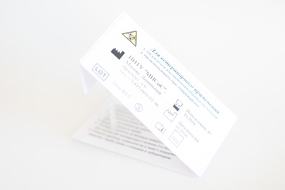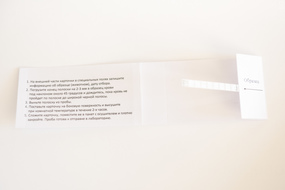NUST MISIS scientists together with colleagues from Lomonosov Moscow State University have developed an express-test for prostate cancer identification.
The test is based on immunochromatographical analysis, which allows researchers to visually determine the amount of prostate-specific antigen (PSA) in the blood serum without the use of special equipment. PSA is a tumor marker in blood. It is an organ-specific marker, but not one connected with a particular prostate disease. It could be used to identify prostate cancer of any type, especially as its early forms can be subject for radical treatment.
The research results were presented during the “Scientific and technological solutions for medicine of the future” videoconference (Moscow-Delhi) held in The International Multimedia Press Center MIA “Russia Today”.
In Russia, prostate cancer is the most common type of cancer in men over the age of 60. The disease is typically diagnosed in its late stages. This development from the NUST MISIS scientists can significantly raise prostate cancer diagnosis in the early stages—increasing the chances of successful treatment.
Due to high costs, mass laboratory screenings for the presence of PSA have never been a large part of medical examination programs. Express-tests, which can reveal the possibility or accurate presence of the disease in 10 minutes, have the potential to become an incredible help in early diagnosis of prostate cancer.
“A dipstick, a vaccination needle, and a disinfection cloth are included in the set that was medically tested. To test it, [you simply need] to load a strip on one end to study the blood serum. If the substance (in this case — PSA) is present in the solution, then its linkage with antibodies labelled by special gold nanoparticles takes place. They are kept in the test zone of the device and displayed as one, two, or three cross-section test lines”, — explained Alexander Osipov, senior research associate at the NUST MISIS Department of Functional Nanosystems & High-Temperature Materials.
If only one strip is displayed, then the test works, but the amount of PSA is so small that we can confidently say the disease isn’t present. If two strips appear, a more thorough investigation is needed, because the amount of PSA is more than 4 nanograms, which points to the possible presence of the disease. If three strips are there, then the amount of PSA is more than 10 nanograms and it is necessary to begin treatment urgently.
The tests are extremely simple. They allow medical professionals to give a provisional diagnose directly in a doctor’s appointment and if necessary, begin treatment.





